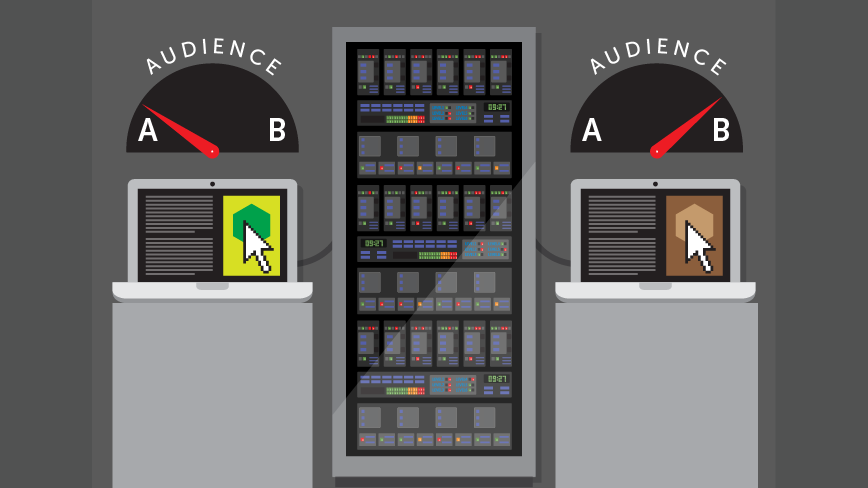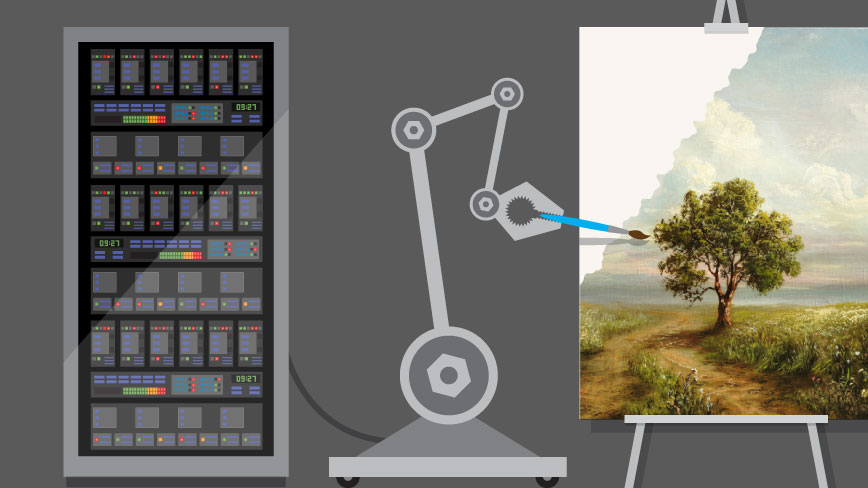Data and the creative process do not have to be adversaries. Find out the ways in which one can inform the other to produce beautiful works of creative that reach audiences in poignant ways.
David carefully cleans off his brush in a cloudy plastic cup. Then, he gently dabs it into a palette of black-colored oil paints. With delicate, polite brushstrokes he brings out the brow of the old Slavic-looking woman he is painting.
If we were to tell you that David moved from a career as an automotive welder on an assembly line to a full-time painter living in the basement of Germany’s University of Konstanz, that would be shocking enough. But the real shock is that David is not a human, he is a robot. His journey from the assembly line to the art community exemplifies the paradigm-shifting ways in which data and creative can begin to merge their efforts and create something beautiful together.
Revelations like this show just how far data and programmatic approaches have come in relation to creative endeavors. David does not just paint what his programmers tell him, he uses a camera to evaluate how effective his strokes are at conveying the image. This real-time feedback allows him to make responsive decisions that correct mistakes. Upon completing his work, he even signs his name.
The difference is that David is able to use data in reference to ideals that bring out and enhance creative works. Marketing industries can harness this potential to inform their creative campaigns and deliver creative stories or images that reach consumers in poignant ways.
What Data and Creative Have to Offer Each Other
There are many ways that data and creative can forge mutually beneficial relationships. In the field of programmatic advertising, data allows marketers to automate ad displays so that the right customers can get the right messages through their favorite channels. By targeting exposures with laser precision, ROI of digital display campaigns increases and consumers enjoy increased relevance in the ads they see.
Now, programmatic divisions are bringing customer taste profiles into their decision-making algorithms. The Tory Burch Spring 2014 Fashion Show, for example, ran live streams as ad content on websites like Garnce Doré, Style.com and Glamour.com.
Future iterations of this campaign expect to be able to differentiate between customer preferences and demographics when choosing which ads to display. Men may see the Men’s Fashion Show whereas women who prefer buying accessories online may see the Accessory Show pop up instead of the typical Spring Wear.
On a smaller scale, data can help tell stories in creative ways that appeal to particular segments. The same image could be given different color palettes, making it look bright and dynamic to some viewers and sentimentally toned down to others.

To help others creatively use data, Annalect offered up travel industry data in March to the Wharton School of Business at the University of Pennsylvania.
This project was meant to improve attribution models and increase understanding of how creative details affected an ad’s role in purchase. Our data incorporated creative identifiers and we invited students and researchers to come up with their own creative models to interpret the data in ways that provided insight into attribution, advertising and customer search.
Efforts like these will help break down the artificial boundaries between the creative process and data marketing and build a new dynamic. In the future, the relationship between the two can create something beautiful, perhaps almost as beautiful as one of David’s paintings.

